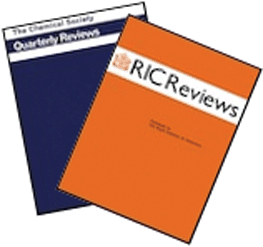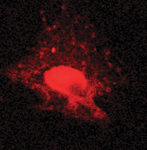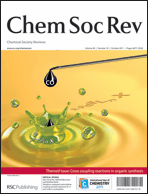This month sees the following articles in ChemSocRev that are in the top ten most accessed:-
Ligand design for functional metal–organic frameworks
Filipe A. Almeida Paz, Jacek Klinowski, Sérgio M. F. Vilela, João P. C. Tomé, José A. S. Cavaleiro and João Rocha
Chem. Soc. Rev., 2012, Advance Article, DOI: 10.1039/C1CS15055C
The Baylis–Hillman reaction: a novel concept for creativity in chemistry
Deevi Basavaiah and Gorre Veeraraghavaiah
Chem. Soc. Rev., 2012, Advance Article, DOI: 10.1039/C1CS15174F
Conversion of biomass to selected chemical products
Pierre Gallezot
Chem. Soc. Rev., 2012, Advance Article, DOI: 10.1039/C1CS15147A
Mechanochemistry: opportunities for new and cleaner synthesis
Stuart L. James, Christopher J. Adams, Carsten Bolm, Dario Braga, Paul Collier, Tomislav Friščić, Fabrizia Grepioni, Kenneth D. M. Harris, Geoff Hyett, William Jones, Anke Krebs, James Mack, Lucia Maini, A. Guy Orpen, Ivan P. Parkin, William C. Shearouse, Jonathan W. Steed and Daniel C. Waddell
Chem. Soc. Rev., 2012, Advance Article, DOI: 10.1039/C1CS15171A
Pd nanoparticles for C–C coupling reactions
Angelica Balanta, Cyril Godard and Carmen Claver
Chem. Soc. Rev., 2011, 40, 4973-4985, DOI: 10.1039/C1CS15195A
Physical chemistry of supramolecular polymer networks
Sebastian Seiffert and Joris Sprakel
Chem. Soc. Rev., 2012, Advance Article, DOI: 10.1039/C1CS15191F
Graphene-based semiconductor photocatalysts
Quanjun Xiang, Jiaguo Yu and Mietek Jaroniec
Chem. Soc. Rev., 2011, Advance Article, DOI: 10.1039/C1CS15172J
Graphene-based composites
Xiao Huang, Xiaoying Qi, Freddy Boey and Hua Zhang
Chem. Soc. Rev., 2012, Advance Article, DOI: 10.1039/C1CS15078B
Towards mild metal-catalyzed C–H bond activation
Joanna Wencel-Delord, Thomas Dröge, Fan Liu and Frank Glorius
Chem. Soc. Rev., 2011, 40, 4740-4761, DOI: 10.1039/C1CS15083A
Dynamic combinatorial chemistry as a tool for the design of functional materials and devices
Emilie Moulin, Gabriela Cormos and Nicolas Giuseppone
Chem. Soc. Rev., 2012, Advance Article, DOI: 10.1039/C1CS15185A
Why not take a look at the articles today and blog your thoughts and comments below.
Fancy submitting an article to ChemSocRev? Then why not contact us today with your suggestions.
Comments Off on Top ten most accessed articles in September














 In its latest issue, Chem Soc Rev is honouring the
In its latest issue, Chem Soc Rev is honouring the 

